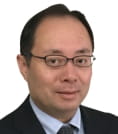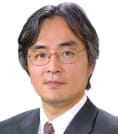[Nanomechanics] Year Started : 2019
Hideyuki Ootsuka
Mechano-multifunctional Polymeric Materials Based on Dynamic Covalent Chemistry
Grant No.:JPMJCR1991
Research Director
Hideyuki Ootsuka

Professor
School of Materials and Chemical Technology
Institute of Science Tokyo
Collaborator
| Hiroshi Ito | Vice President Yamagata University |
Outline
Functional materials triggered by macroscopic mechanical stimulation such as compression, stretching, shearing, bending, impact, and friction are called “mechanofunctional materials”. In this project, innovative mechano-multifunctional polymeric materials, which show more than one mechano-functionality will be prepared. The materials design will be based on “dynamic covalent chemistry” which utilizes the covalent bonds under equilibrium. Furthermore, mechanism of the multi-mechanofunctional materials will be clarified by multi-scale dynamic analyses to obtain insight into a guiding principle of the materials design.
Takamasa Sakai
Elucidation of robust-toughening mechanism of gels and development of artificial tendon and ligament
Grant No.:JPMJCR1992
Research Director
Takamasa Sakai

Professor
Graduate School of Engineering
The University of Tokyo
Collaborator
| Kotaro Satoh | Professor School of Materials and Chemical Technology Institute of Science Tokyo |
| Yuichi Masubuchi | Professor Graduate School of Engineering Nagoya University |
| Koichi Mayumi | Associate Professor The Institute for Solid State Physics The University of Tokyo |
Outline
For a practical application of hydrogels to artificial tendons and ligaments, we develop innovative biocompatible hydrogels that constantly exhibit an excellent mechanical response (mechanical robustness) even in harsh environments with repeating mechanical stress. To achieve mechanical robustness, we will introduce a novel toughening mechanism, i.e. control over dynamic and static crystallizations. Throughout synthesis, experiment, and simulation, we will elucidate the robust-toughening mechanism based on dynamic and static crystallization. Finally, we will develop prototypes of artificial tendon and ligament, and examine the functionality through the animal experiments.
Hiroshi Jinnai
Elucidation of adhesion/fracture mechanism of soft/hard interface by atomic resolution electron microscopy
Grant No.:JPMJCR1993
Research Director
Hiroshi Jinnai

Professor
Institute of Multidisciplinary Research for Advanced Materials
Tohoku University
Collaborator
| Kazutomo Suenaga | Professor Institute of Scientific and Industrial Research The University of Osaka |
| Teruyasu Mizoguchi | Professor Institute of Industrial Science The University of Tokyo |
| Kaname Yoshida | Senior Researcher Nanostructures Research Laboratory Japan Fine Ceramics Center |
Outline
Combining organic and inorganic materials is an effective method for realizing lightweight and high-strength materials. Such a composite material has an interface (called a heterogeneous interface) where different materials come into contact, and plays an important role in the function of the material. In this study, we used the most advanced electron microscopy and theoretical calculations to precisely identify the arrangement of atoms and molecules at the interface. Furthermore, we will clarify the fundamental principle of adhesion/fracture mechanism at the heterogeneous interface by applying the above atomic scale knowledge to the macroscopic delamination phenomena, called the anchor effect.
Nobuhiro Tsuji
Advanced structural metals showing both high strength and large ductility by controling nucleation of different deformation modes
Grant No.:JPMJCR1994
Research Director
Nobuhiro Tsuji

Professor
Graduate School of Engineering
Kyoto University
Collaborator
| Tomotsugu Simokawa | Professor Institute of Science and Engineering Kanazawa University |
| Mayu Muramatsu | Associate Professor Faculty of Science and Technology Keio University |
| Mitsuhiro Murayama | Professor Institute for Materials Chemistry and Engineering Kyushu University |
Outline
We firstly clarify the mechanism for the nucleation of various deformation modes from grain boundaries and interfaces in the metallic materials having highly controlled nano-/micro-structures. Then, the mechanism for the regeneration of strain-hardening ability by the nucleation of different deformation modes is fundamentally studied. Based on the obtained results, we try to realize advanced structural metals having both high strength and large ductility, through designing and processing the nano-/micro-structures of materials in which different deformation modes can be sequentially activated. Using state-of-the-art methods in both experiments and calculations, deformation mechanism in nano—scales is correlated with macroscopic deformation behaviors.
Hiroyuki Toda
Tomography for bridging nano and macro: semi-spontaneous interfacial debonding
Grant No.:JPMJCR1995
Research Director
Hiroyuki Toda

Professor
Graduate School of Engineering
Kyushu University
Collaborator
| Taisuke Sasaki | Group Leader Research Center for Magnetic and Spintronic Materials National Institute for Materials Science |
| Shigeru Hamada | Professor Graduate School of Engineering Kyushu University |
| Kyosuke Hirayama | Associate professor Faculty of Engineering and Design Kagawa University |
| Kenji Matsuda | Professor Academic Assembly University of Toyama |
| Masatake Yamaguchi | Research Director Center for Computational Science & e-Systems Japan Atomic Energy Agency |
| Ikumu Watanabe | Principal Researcher Center for Basic Research on Materials National Institute for Materials Science |
Outline
In this project, we revisit the ductile fracture via interfacial debonding of particles by employing the advanced micro- and nano-tomography techniques for bridging nano and macro, and also by combining it with the nanoscopic image-based computational physics and the macroscopic mechanical-engineering approach. We will thereby elucidate the debonding mechanism of incoherent interface and also physically clarify its dominant factors. We will provide academic approaches to bridge nano and macro by utilizing the fact that nanoscopic dislocations are identical to macroscopic strain.
Hidehiro Yoshida
Strong field nanodynamics at grain boundaries and interfaces in ceramics
Grant No.:JPMJCR1996
Research Director
Hidehiro Yoshida

Professor
Graduate School of Engineering
The University of Tokyo
Collaborator
| Koji Morita | Group Leader Research Center for Electronic and Optical Materials National Institute for Materials Science (NIMS) |
| Takahisa Yamamoto | Professor Graduate School of Engineering Nagoya University |
Outline
Ceramic materials under strong electric fields have been found to exhibit unique mechanical responses such as low-temperature and high-speed superplastic deformation. Behind these phenomena, a new physics termed strong field nanodynamics is hidden; that is, an excitation of kinetics in the nanoscale regions such as grain boundaries and interfaces. In this research project, we will build a discipline of strong electric field nanodynamics and aim to obtain theoretical guidelines for development of new macromechanical responses such as large ductility and strong-field healing in ceramics.













